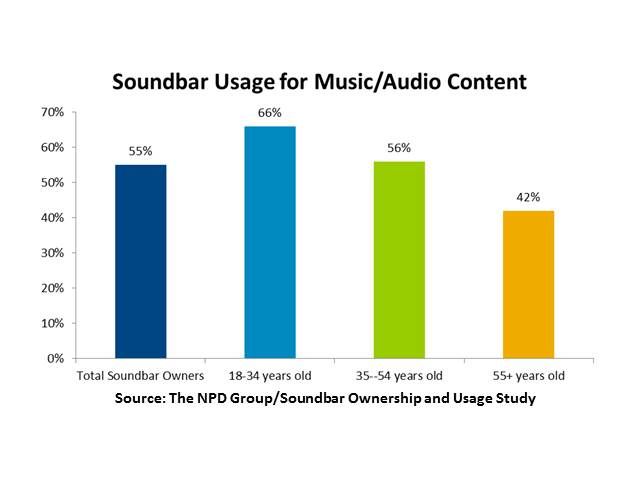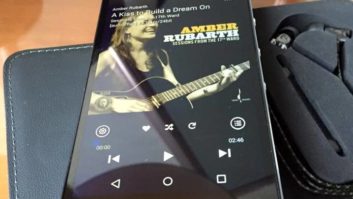
Port Washington, N.Y. – For younger people, soundbars are just as much about listening to music as they are about getting good TV sound, The NPD Group found.
In a first-quarter survey, NPD found that 55 percent of consumers use a soundbar for listening to music and other audio-related content, such as podcasts and radio, in addition to using it for TV watching. The percentage jumps to 66 percent among 18- to 34-year-olds, and they spend about 22 percent of their soundbar-listening time listening to music and other audio-only content. The total population, in contrast, spends only 15 percent of its soundbar-usage time listening to audio-only content.
A total of 36 percent of soundbar owners are connecting at least one portable device to their soundbar, NPD found. Twenty-three percent connect their smartphone to a soundbar, 16 percent connect a tablet or notebook computer, and 12 percent connect an iPod.
“Millennials are one key factor to growing the soundbar market,” said NPD executive director Ben Arnold.
Millennials account for 44 percent of all audio hardware spending, according to NPD’s Consumer Tracking Service, up from just 35 percent a year ago. And millennials collectively spend more than $300 million yearly on soundbars, placing the category among the top three for most audio dollars spent by 18-34 year olds.
Other factors driving soundbar growth include lower selling prices, new products, and consumer adoption of new TV technologies such as 4K, said NPD, which forecasts annual unit-growth rates of about 20 percent through 2016.
Millennials and younger consumers are key drivers of soundbar growth for multiple reasons, Arnold said. For one thing, soundbars represent their first foray into home theater. Only 10 percent of consumers 18-34 own a component-audio system, but 12 percent own a soundbar, he said. “Soundbars as a product category are beginning to appeal to young consumers, bringing them into a home theater market that may not have interested them otherwise,” he said.
The increasing affordability of big-screen TVs is also driving younger consumers to soundbars, he added. The average selling price of a 50-inch TV in the second quarter was $550, down 17 percent 2013’s second quarter. As a result, more millennials have entered the big-screen market to account for 17 percent of all sales of 50-inch and up TVs. “Soundbars, which are reasonably easy to install and have a minimal footprint in the living room (especially important for young apartment dwellers), are an attractive solution for both audio enthusiasts and those simply looking to improve the sound from their new TV,” he said.
Most important, he said, “soundbars are ready-made for the streaming age.” More than 80 percent of soundbars sold in the past year were Bluetooth-enabled. Forty-one percent of soundbar owners under 35 say wireless technologies such as Bluetooth were important to their purchasing decision compared to 26 percent of 35-and-up owners. For young consumers, “the soundbar is a more versatile product, no longer strictly a TV accessory but a speaker capable of playing a variety of audio content from nearly any source device,” Arnold said.
Signs are emerging that soundbars are disruptive to the home audio market, he added. Thirty-five percent of soundbar owners “have either retired or displaced an owned A/V receiver, and 45 percent have transitioned a home theater in a box system,” he said.
More than 6,000 U.S. consumers were surveyed from NPD’s online panel in the first quarter, and about 750 were soundbar owners.







